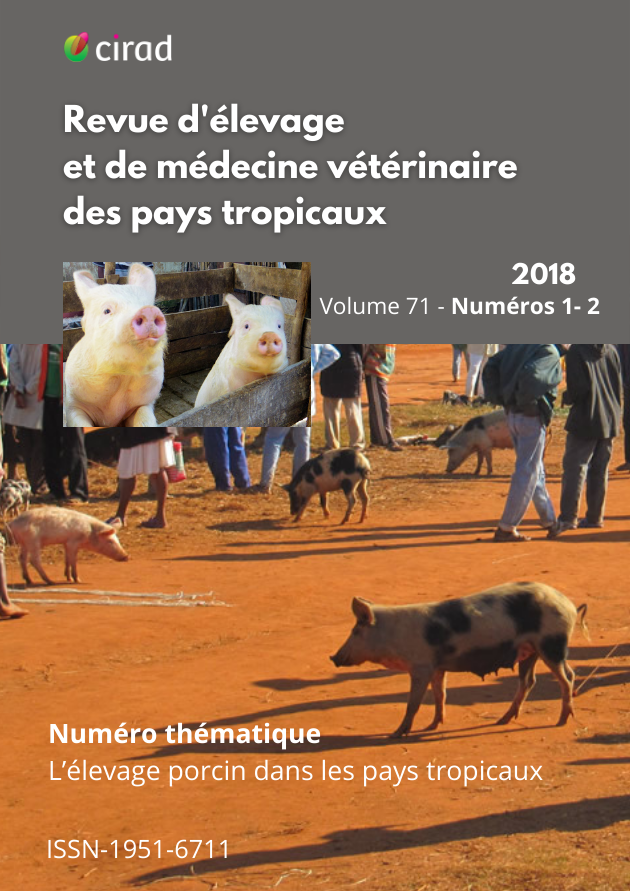Serotypes and antimicrobial resistance patterns of Salmonella enterica subsp. enterica in pork and related fresh-vegetable servings among pork outlets in Kampala, Uganda
DOI:
https://doi.org/10.19182/remvt.31289Keywords
pork, Salmonella enterica subsp. enterica, resistance to antibiotics, food chain, PCR, UgandaAbstract
The aim of this study was to characterize serotypes, phenotypic antimicrobial resistance patterns, and plasmid profiles of 55 Salmonella enterica subsp. enterica isolates in different matrices from 77 pork outlets in Kampala, Uganda. Seven different serovars were identified, namely Enteritidis (60%), Offa (10.9%), Gallinarum (7.3%), Arechavaleta (monophasic) (7.3%), Zanzibar (7.3%), Kampala (5.4%), and Saintpaul (1.8%). Most isolates were obtained from raw pork (40.0%), followed by flies (27.3%), raw vegetables (18.2%), water (12.7%), and roasted pork (1.8%). All but one of the isolates (98%) showed resistance to at least one of the 22 antimicrobials tested, with highest levels of resistance expressed to cefazolin (95%), and cefotaxime (93%). Intermediate resistance was found to ciprofloxacin (58%), chloramphenicol (58%), and amoxicillin-clavulanic acid (56%). Most isolates were susceptible to levofloxacin (75%), sulfamethoxazole-trimethoprim (80%), and ofloxacin (96%). Characterization of strains by PCR based replicon typing detected the presence of FIA, FIB, FIC, HI1, HI2, I1-1y, L/M, N, P, W, T, A/C, K, B/O, X, Y, F and FIIA replicons. Six replicon groups (FIA, W, FIC, FIB, P, and Y) were identified in 53 of the 55 (96.4%) isolates with more than one group existing among 42 different isolates. Although the average number of replicon groups per strain was low (2.6), phenotypical resistance rates remained high implying that some strains seemed to encode resistance on the chromosome or undetected plasmids, respectively. Potential drivers in livestock production and human medicine, and sources of antimicrobial resistance need to be identified to protect public health in Uganda.
Downloads
Downloads
Additional Files
-
Abstract1260
-
PDF85
-
pdf12
Received
Accepted
Published
How to Cite
Issue
Section
Categories
License
© D.Ndoboli et al., hosted by CIRAD 2018

This work is licensed under a Creative Commons Attribution 4.0 International License.






